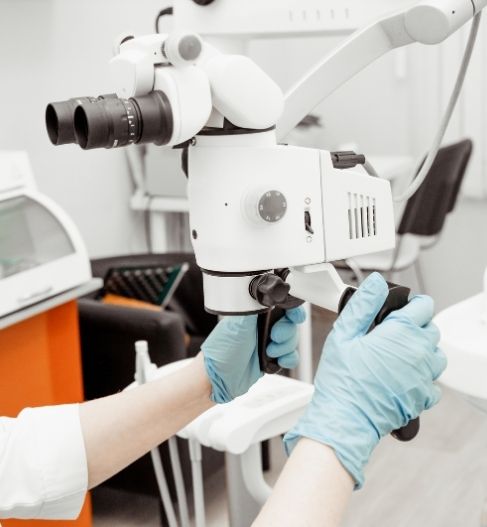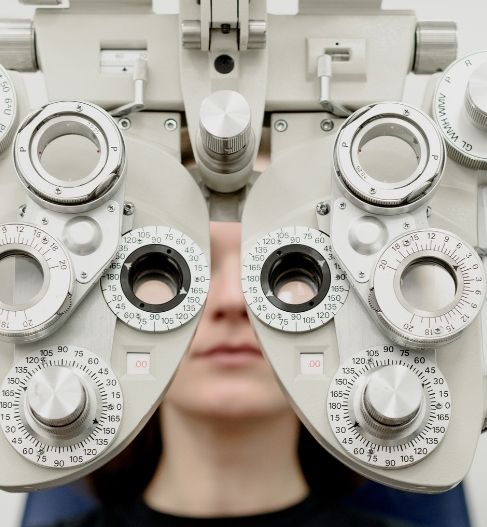What is GID Company's Medical Product Design Development?
Leading Medical Device Design Company in California

Here’s how we streamline your journey for medical device design:
- Collaborative Ideation: We work closely with you to understand your product concept, target patient population, and desired outcomes. Through brainstorming and research, we refine your idea into a viable product concept that addresses unmet clinical needs.
- Regulatory Compliance: Navigating the complex landscape of medical device regulations is our forte. We integrate regulatory considerations from the outset, ensuring your device meets all requirements for market approval.
- Design & Engineering Excellence: Our team of skilled designers and engineers translate your concept into a detailed product design, utilizing cutting-edge technologies like 3D modeling and simulation. We prioritize user-centricity, ergonomics, and safety in every design aspect.
- Prototyping & Testing: We create functional product prototypes to validate design concepts, gather user feedback, and conduct rigorous testing to ensure the device’s safety and efficacy. We iterate and refine the design based on test results to achieve optimal performance.
- Manufacturing & Market Launch: We facilitate the transition from design to production, helping you select suitable manufacturing partners and ensuring a smooth launch of your medical device into the market. Our support continues post-launch, assisting with regulatory updates and continuous improvement initiatives.
The Impact of Medical Device Design Services
Best Medical Device Design Company in California
Medical device design and development is a transformative force in healthcare, shaping the future of patient care and well-being. It goes beyond mere product creation, encompassing a holistic approach that considers patient needs, technological advancements, and regulatory compliance. GID Company is California-based Medical Device Design Company and serving clients in Florida, Utah, Texas, Arizona, Georgia and across the USA. The impact of well-executed medical device design development resonates throughout the healthcare ecosystem:
Elevated Patient Outcomes
Intuitive designs prioritize patient comfort and ease of use, promoting better adherence and treatment outcomes. Streamlined workflows improve healthcare provider efficiency.
Uncompromising Safety
Rigorous testing and adherence to regulations ensure devices are safe and effective, mitigating risks and inspiring confidence in both patients and providers.
Rapid Innovation
Collaboration between engineers, designers, and healthcare professionals accelerates the development of groundbreaking solutions that address unmet clinical needs.
Market-Ready Products
User-centric design, coupled with a focus on functionality and aesthetics, creates medical devices that resonate with users and thrive in the competitive market.

Let's Bring Your Product Vision To Life
Don't let your vision remain just an idea. Contact us today and let's start building the future of your product.
Types of Medical Devices GID Company Can Design
Leading Medical Device Design Company in USA
- Diagnostic Devices: We design diagnostic devices that aid in the detection and monitoring of medical conditions. These devices can range from portable blood glucose meters for diabetes management to advanced imaging systems for disease diagnosis.
- Therapeutic Devices: Our team develops therapeutic devices that deliver treatments or interventions to patients. This includes drug delivery systems, implantable devices, and surgical instruments that improve patient outcomes and quality of life.
- Monitoring Devices: We create monitoring devices that track vital signs, physiological parameters, and other health-related data. These devices provide valuable insights to healthcare professionals, enabling them to make informed decisions about patient care.
- Wearable Devices: Our expertise extends to wearable medical devices that empower patients to manage their health conditions actively. These devices can monitor various parameters, deliver therapy, and provide real-time feedback to promote a healthier lifestyle.
- Digital Health Solutions: We leverage our expertise in software development and user interface design to create digital health solutions that complement medical devices. These solutions can range from mobile apps for patient education and engagement to cloud-based platforms for data management and analysis.

From Idea to Reality - Watch How We Do It!

Our Medical Device Design Development Process
Connect with top Medical Device Design Company
-
Idea Generation
Uncover unmet needs. Identify clinical challenges, explore potential solutions, and conceptualize innovative medical devices that can make a real difference. -
Feasibility Assessment
Validate your vision. Analyze technical feasibility, regulatory requirements, and market potential. Ensure your concept aligns with real-world possibilities. -
Market Research
Understand your landscape. Research competitors, analyze target users, and assess market size. Gather critical insights to guide development and ensure a successful launch. -
Concept Development
Refine your idea. Create sketches, mockups, and initial designs. Collaborate with experts to solidify your concept and envision the final product. -
Detailed Design
Blueprint for success. Develop precise technical specifications, CAD models, and prototypes. Ensure your design is functional, safe, and user-friendly. -
Prototyping
Build and iterate. Create functional prototypes for testing and validation. Gather user feedback, refine the design, and repeat until perfection. -
Testing & Validation
Ensure safety and efficacy. Conduct comprehensive testing to verify performance, durability, and compliance with regulatory standards. Prioritize patient safety above all. -
Regulatory Compliance
Navigate the landscape. Identify applicable regulations and standards. Prepare meticulous documentation to ensure your device meets all requirements. -
Clinical Trials (if applicable)
Gather evidence. Design and conduct clinical trials to demonstrate the safety and effectiveness of your device in a real-world setting. -
Manufacturing Setup
Prepare for production. Select reliable manufacturing partners, establish quality control processes, and ensure seamless production at scale. -
Packaging & Labeling
Protect and inform. Design secure packaging that safeguards the device. Include clear labeling that adheres to regulatory requirements and educates users. -
Post-Market Surveillance
Monitor and improve. Establish a robust system to track device performance, collect user feedback, and identify areas for continuous improvement. -
Marketing & Distribution
Reach your audience. Develop a compelling marketing strategy to introduce your device to healthcare professionals and patients. Create effective distribution channels to ensure accessibility. -
Good Identity (GID) Considerations
Prioritize safety and security. Implement unique device identifiers, robust encryption, secure data transmission, and user authentication measures to protect patient data and ensure device integrity. -
Continuous Improvement
Never stop innovating. Gather user feedback, monitor device performance, and leverage emerging technologies to enhance your product and maintain its competitive edge.
Why Choose GID Company for Your Medical Device Design Development?
Expert Medical Device Design Services Near You
GID Company is your ideal partner for medical device design services, offering a unique blend of technical expertise, regulatory knowledge, and a passion for improving healthcare. We understand the intricacies of the medical device industry and are committed to guiding you through the complex development process. Here's why GID Company stands out:
Regulatory Expertise
We have extensive experience navigating the complex regulatory landscape of medical devices. Our team ensures your device adheres to all necessary standards, streamlining the approval process and minimizing risks.
User-Centric Design
We prioritize the needs and experiences of both patients and healthcare professionals in our design process. Our medical devices are intuitive, comfortable to use, and optimized for real-world clinical settings.
Multidisciplinary Team
Our team comprises experts in various fields, including engineering, design, regulatory affairs, and quality assurance. This collaborative approach ensures a holistic perspective and comprehensive solutions.
Proven Track Record
We have a history of successfully developing and launching medical devices across various therapeutic areas. Our portfolio showcases our ability to tackle complex challenges and deliver innovative solutions.
Not Sure Where To Start?
Call JIM
Frequently Asked Questions - FAQs
-
How to get into medical product design?
Getting into medical product design requires a strong foundation in engineering, industrial design, and an understanding of medical regulations. At GID Company, we offer Medical Device Design Services that help clients navigate the complexities of this field, from concept development to compliance with industry standards.
-
How to create a medical product?
Creating a medical product involves several key steps, including identifying a market need, conceptualizing the design, prototyping, testing, and regulatory approval. GID Company’s Medical Product Design process ensures that every step is handled with precision, ensuring your product is safe, effective, and ready for the market.
-
What are the 5 elements of product design?
The five essential elements of product design include:
- Functionality
- Aesthetics
- Usability
- Cost-effectiveness
- Manufacturability
GID Company’s Medical Product Design services emphasize these elements to ensure your product is both innovative and feasible for mass production.
-
What is the medical device design process?
The medical device design process includes research, ideation, concept development, product designing, prototyping, testing, and regulatory compliance. At GID Company, we specialize in Medical Product Design, ensuring that your medical device meets all functional and safety standards throughout the design process.
-
How to start a medical invention?
To start a medical invention, you need to identify a healthcare problem, research existing solutions, and develop a new concept or device. GID Company’s Medical Product Design team can guide you through every phase of the invention process, from brainstorming ideas to creating a functional prototype and navigating regulatory hurdles.
-
What is the typical timeline for medical device design development?
The timeline for medical device design can vary depending on complexity and regulatory requirements, but it generally takes 12-24 months from concept to market. GID Company’s expertise in Medical Product Design helps streamline the process while ensuring all necessary tests and compliance checks are met efficiently.
-
What are the 4 C's of product design?
The 4 C’s of product design are:
- Creativity
- Competence
- Communication
- Cost-efficiency
GID Company integrates these principles into our Medical Product Design process, ensuring that your medical device is innovative, practical, and designed to succeed in the marketplace.
-
What are the 4 phases of product design?
The 4 phases of product design include:
- Ideation
- Concept Development
- Prototyping
- Testing and Refinement
With GID Company’s Medical Product Design services, each phase is executed meticulously to deliver a medical device that meets both regulatory standards and user needs.
-
What are the 4 good common features of product design?
The 4 common features of good product design are:
- Simplicity
- Durability
- Functionality
- Aesthetics
GID Company’s Medical Product Design services ensure that your medical product is designed with these features in mind, making it user-friendly, reliable, and market-ready.















